Home »
Misc »
How big is a basketball court in metres
How big is a basketball court in metres
Basketball Court Dimensions & Markings
The playing area of a basketball court in the UK is 91.8ft (28m) in length and 49.21ft (15m) wide. Indoor courts should be 22.96ft (7m) in height.
Sport England's requirements are split into four levels of play: International, Premier (national competition), Club (regional competition) and Community (schools/recreational). This allows courts to be more flexible with sizes. The dimensions of a basketball court in these cases also include a minimum length and width: 85.3ft (26m) x 45.93ft (14m).
| Court aspect | Dimensions |
| Length (International) | 28m |
| Width (International) | 15m |
| Height (International) | 7m |
| Length (other levels) | 26-28m |
| Width (other levels) | 14-15m |
| Height (other levels) | 7m |
How long is a basketball court?
The length of a basketball court is 28m.![]() These measurements can be reduced to 26m for Premier, Club and Community courts where only smaller spaces are available.
These measurements can be reduced to 26m for Premier, Club and Community courts where only smaller spaces are available.
How wide is a basketball court?
The width of an International-standard basketball court in the UK is usually 15m. The court lines can be reduced by no more than 1m (14m) if required for lower levels of play.
What is the total area of a basketball court?
The total area of a professional basketball court is 420m². The minimum area allowed under Basketball England's guidance is 364m². These measurements apply to both indoor and outdoor courts.
The addition of 2.05m run-offs and 2m for teams and officials on the sideline increases the total area to 677.31m².
Basketball court dimensions in feet
A basketball court is 91.86ft long and 49.21ft wide. The total playing area for a court is 4520.43 ft² and 7290.5ft² if run-offs and sidelines are required.
| Court aspect | Dimensions |
| Length | 91.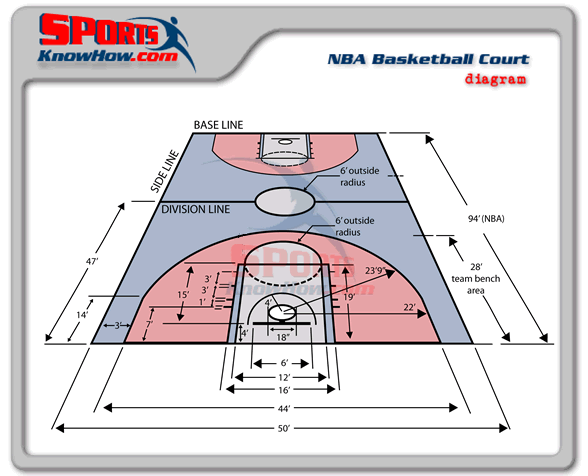 86ft 86ft |
| Width | 49.21ft |
| Height | 22.96ft |
| Playing area | 4520.43ft² |
| Playing area (including run-offs and sidelines) | 7290.5ft² |
Basketball court dimensions in yards
A basketball court is 30.62 yards long, and 16.4 yards wide. The total playing area for a court is 502.31yds² and 810yds² if run-offs and sidelines are required.
| Court aspect | Dimensions |
| Length | 30.62yds |
| Width | 16.4yds |
| Playing area | 502.31yds² |
| Playing area (including run-offs and sidelines) | 810yds² |
Basketball court markings
Regulation line markings must be 50mm width in a contrasting colour to the playing surface.
Sidelines
The outer edge of the court is denoted by the sidelines, which run the length of the court. On a full-sized court they measure 28m.
Baseline and endline
The terms baseline and endline both refer to the ends of the court running behind the goals. Typically they measure 15m.
The use of the different terms depends on the direction a team is playing. Endline is the term for the end of the court which a team is defending, baseline is the for the attacking end.
Mid court
This is the halfway mark on the court and is used to denote the offensive playing area during a game.
On a full-sized court, the mid court line would be 14m from each endline.
Centre circle
Used for the opening tip off, the centre circle has a 3.6m diameter.
Three point line
The three point lines are the arcs that mark a range boundary from each hoop. Scoring from outside this line is worth three points. The distance of the line will vary depending on the level of game, but is typically 6. 75m from the basket.
75m from the basket.
Free throw line
The free throw line, marked 4.6m from the backboard, is the mark at which a player must stand when shooting free throws.
Free throw circle
The free throw circle is the same size as the centre circle (3.6m in diameter). Shooters must stay inside this circle when taking a free throw. The circle is also used for jump balls.
Free throw lane lines/key
Lane lines run from the free throw line to the baseline, to form the 'key'. The shape and width can vary depending on the level of the game, but FIBA (International Basketball Federation) regulation changes in 2010 set it as a 4.9m by 5.8m rectangle.
Some also include space markings to keep opposing players from obstructing the free throw shooter.
Basketball court lines in feet and yards
| Court marking | Dimensions (ft) |
| Sidelines | 91.86ft |
| Baseline and endline | 49.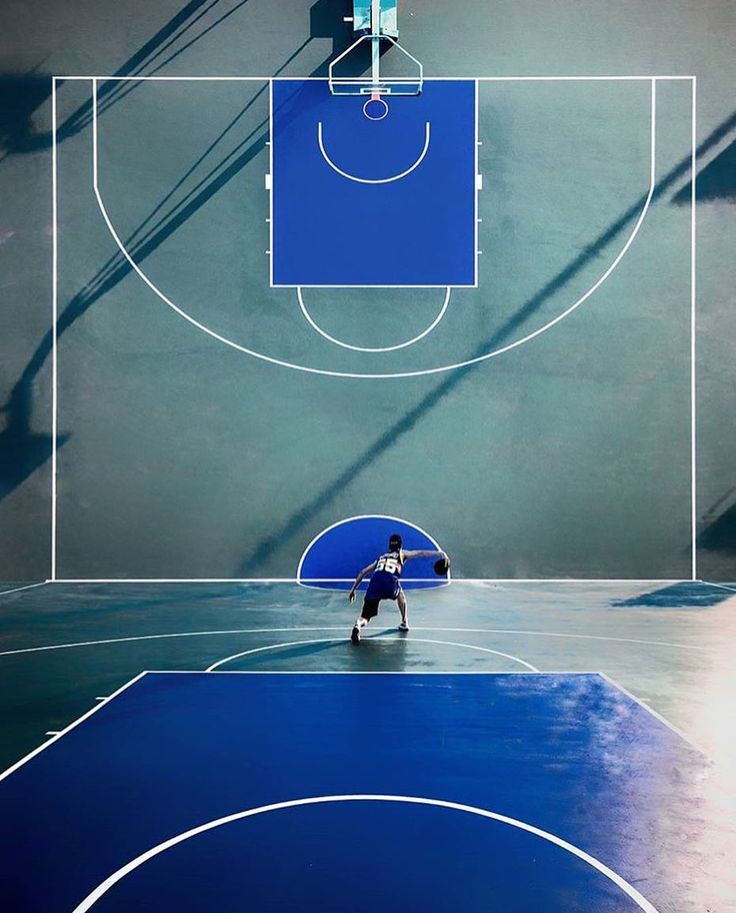 21ft 21ft |
| Mid court | 45.93ft |
| Centre circle | 11.81ft diameter |
| Three point line | 22.14ft from the basket |
| Free throw line | 11.81ft, 15.09ft from the backboard |
| Free throw circle | 11.81ft diameter |
| Free throw lane lines/key | 16ft x 19ft |
| Court marking | Dimensions (yds) |
| Sidelines | 30.62yds |
| Baseline and endline | 16.4yds |
| Mid court | 15.31yds |
| Centre circle | 3.93yds diameter |
| Three point line | 7.38yds from the basket |
| Free throw line | 3.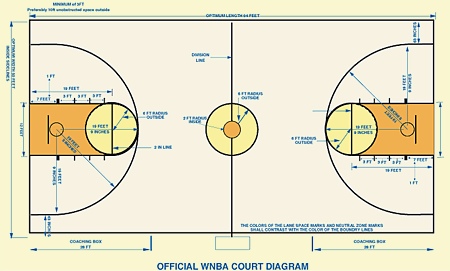 93yds, 5.03yds from the backboard 93yds, 5.03yds from the backboard |
| Free throw circle | 3.93yds diameter |
| Free throw lane lines/key | 5.33yds x 6.33yds |
Basketball goal dimensions
A number of basketball goal systems are available: wall hinged, ceiling mounted or free-standing practice goals.
Backboards
Backboard dimensions are 1.8m x 1.22m, with a minimum thickness of 19mm. Backboards can be made of either timber or transparent material and must be fitted with padding at all levels above U16.
Backboard line markings should be 50mm in width and either black or white, depending on the material of the board. The inner rectangle should measure 0.45m x 0.59m.
Goals
The basketball goal (also known as a ring or hoop) is typically 18 inches (45.72cm) in diameter and must be positioned 3.05m from the floor.
Nets are typically white and suspended from the ring. They should be no shorter than 45cm.
They should be no shorter than 45cm.
Download the PDF
The images and diagrams showing the dimensions of a basketball court in this article are available in a downloadable PDF
Check out our range of basketball equipment, including goals, backboards and accessories.
Related Posts
- Hockey field dimensions
- Rugby pitch dimensions
- Rugby league pitch dimensions
- Tennis court dimensions
Basketball Court Dimensions Guide (Australia) FIBA & NBA Measurements
Basketball courts come in a range of different sizes, however some features remain the same, such as the size and height of the basket and the distance from the basket to the free throw line.
This guide was written to assist those that are planning the creation of a basketball court in Australia, with court line markings based on either FIBA, NCAA or NBA regulation size court dimensions. In Australia, the National Basketball League (NBL) uses FIBA regulations and rules, including total court size and court line markings such as the free throw and three point lines.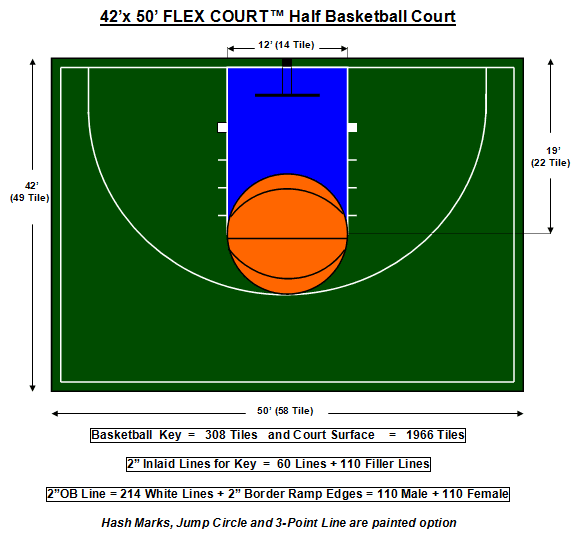 Thus we recommend sticking to FIBA court dimensions for Australian Basketball courts.
Thus we recommend sticking to FIBA court dimensions for Australian Basketball courts.
Basketball court dimensions in metres!
If you're looking for court sizes & line markings in metres, you're in luck...
Whether you're intending to build a small "custom sized backyard half court" or a "FIBA regulation 3X3 half court" all the way to an "NBA sized full court", you've come to the right place to get all the metric dimensions you’ll need for your chosen line markings.
Basketball Court Sections
It'll help to know the various areas of a court before proceeding - refer to this picture...
Click image to enlarge
So how big is a basketball court?The International basketball Federation (FIBA) rules, dictate that
A full size FIBA regulation size basketball court measures exactly 28 by 15 meters.
In the National basketball Association (NBA), the court is 28.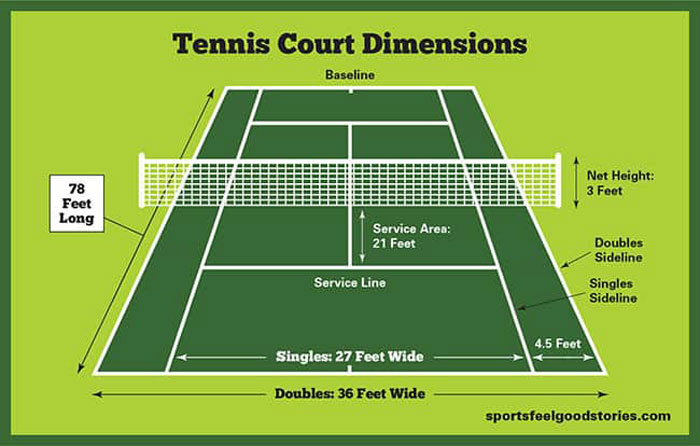 7 by 15.2 metres.
7 by 15.2 metres.
In Australia, backyard half-courts generally start in size from about 7metres in height to fit the "free-throw line" (or 9m to fit the "three-point line") and 4 or 5 metres in width and upwards. Other popular sizes include; 9m x 5m, 10m x 7m and the FIBA 3x3 regulation sized 15m x 11m half court.
Basketball Court Lines
All lines should be 5cm in width and should be painted in a single colour throughout (usually white).
Hoop
In amateur basketball, court sizes can vary widely. One thing that remains identical on all basketball courts are the baskets (also known as hoops) are always 3.05 m (10ft) above the floor (except in some youth competitions).
Three Point Arc
The FIBA regulation three point arc is 6.75 m away from the basket. Any shot made outside of the three point arc is worth three points instead of the normal two. The distance from the hoop to the three point arc varies for under different regulations:
| Arc Radius from Hoop | Minimum Distance from Sidelines |
| FIBA | 6.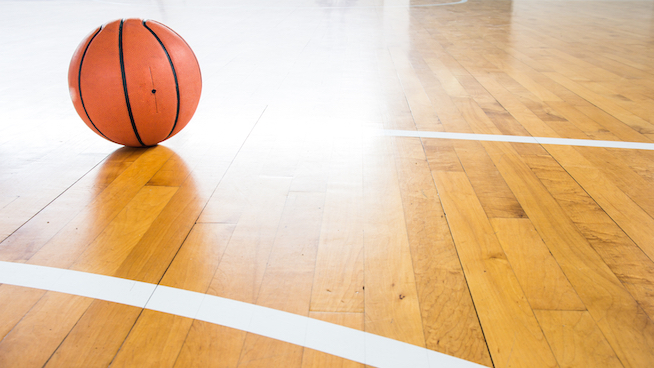 75 m 75 m | 0.90 m |
| NBA | 7.24 m | 0.91 m |
Basketball courts have a three-point arc at both baskets. The three point line is not part of the three-point field goal area.
Free Throw Line
The free-throw line is 4.6m from the backboard. This is an important measurement for backyard basketball court construction, although the key width (3.6m) is often shrunken to fit the space without effecting gameplay , the key height (specifically the distance of free throw line to the backboard) should be maintained at 4.6 metres in order to effectively practice regulation free throw shooting at home.
No-Charge Semi-Circle (Restricted Area)
The no-charge semi-circle lines consist of a semi-cicle with a radius of 1.25m measured from the point on the floor directly under the exact centre of the basket to the inner edge of the semi-circle. The semi-circle is joined to two parallel lines perpendicular to the endlines, 0.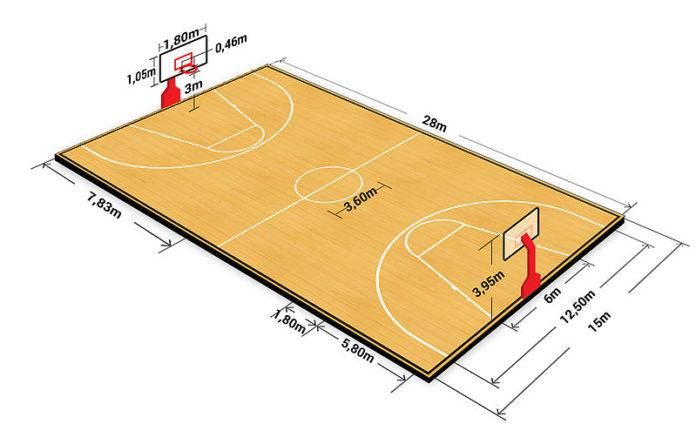 375m in length and ending 1.20m from the inner edge of the endline.
375m in length and ending 1.20m from the inner edge of the endline.
Basketball Court Measurement Table
| Area | NBA | FIBA / NBL | WNBA | NCAA |
|---|
| Imperial | Metric | Imperial | Metric | | | Imperial | Metric |
|---|
| Court length | 94 ft | 28.65 m | 91.86 ft | 28 m | Same as NBA |
|---|
| Court width | 50 ft | 15.24 m | 49.21 ft | 15 m | Same as NBA |
|---|
| Rim height | 10 ft | 3.05 m | Same as NBA |
| No Charge Zone arc | 4 ft | 1.22 m | 4.10 ft | 1.25 m | Same as NBA |
| Center circle diameter | 12 ft | 3. 66 m 66 m | 11.81 ft | 3.6 m | Same as NBA |
| 3-point line distance from the basket | 23.75 ft
22 ft in corner* | 7.24 m
6.70 m in corner* | 22.15 ft
21.65 ft in corner† | 6.75 m
6.60 m in corner† | Same as FIBA | 20.75 ft | 6.32 m |
| Key (shaded lane or restricted area) width | 16 ft | 4.88 m | 16.08 ft | 4.9 m | Same as NBA | 12 ft | 3.66 m |
| Free-throw line distance from point on the floor directly below the backboard | 15 ft | 4.57 m | 15.09 ft | 4.6 m | Same as NBA |
* The NBA three-point line is 0.91 m from the sideline in a zone starting at the baseline and ending when it crosses the 7.24 m arc.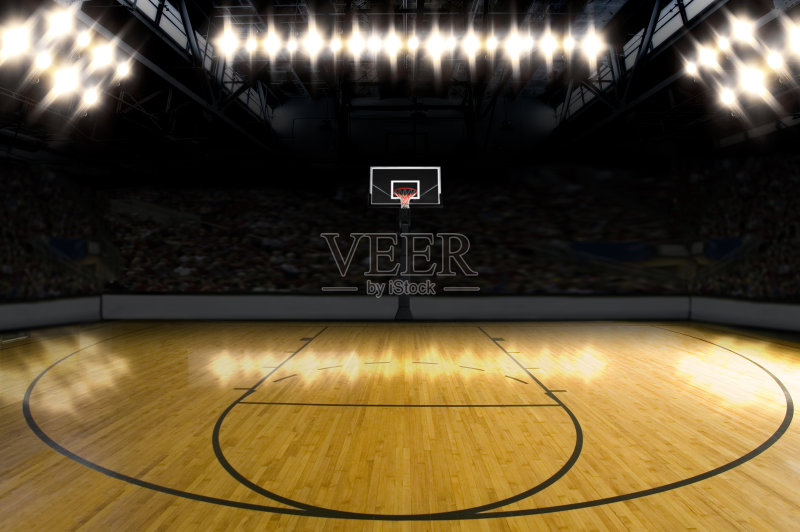 The 6.70 m distance exists only at the points on the three-point line that are directly to the left and right of the basket centre.
The 6.70 m distance exists only at the points on the three-point line that are directly to the left and right of the basket centre.
† The FIBA three-point line is 0.90 m from the sideline in a zone starting at the baseline and ending when it crosses the 6.75 m arc. The 6.60 m distance exists only at the points on the three-point line that are directly to the left and right of the basket centre.
The NBA, the NCAA and the National Federation of State High School Associations dictate that the free-throw line is 4.57 m horizontally from the plane of the front of the backboard.
Regulation FIBA vs NBA
In Australia, the most popular choice of backyard court line marking sizing is to adhere to the International Basketball Federation (FIBA) rules and regulations. FIBA regulation size courts are reasonably close to the NBA regulation size, in both total court size and specific court lines. Although the most significant difference between the two is the three point line, which is 49cm further away from the hoop at the arc, than FIBA regulation.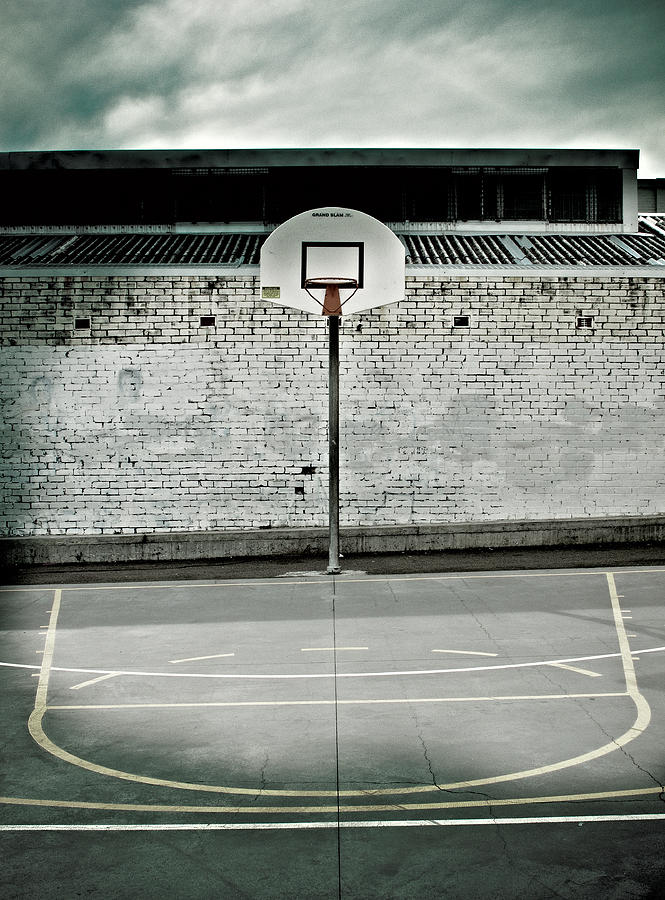
What is the
length of a Basketball Court?
A FIBA-regulation size basketball court has a length of 28 metres. An NBA-regulation size basketball court has a length of 28.7 metres.
What is the
width of a Basketball Court?
A FIBA-regulation sized basketball court has a width of 15 metres. An NBA-regulation basketball court has a length of 15.2 metres.
What is the height of a Basketball Hoop?
A Basketball Hoop is exactly 3.05m (10 feet) above the ground. FIBA & NBA regulation backboards are 183 cm wide by 110 cm tall.
What is the diameter of a Basketball Hoop?
All basketball rims are 46 cm in diameter.
What is the size of the rectangle painted on a Basketball Backboard?
The inner rectangle graphic on the backboard is 61 cm wide by 46 cm tall.
Below is a detailed drawing that includes FIBA, NBA & NCAA line marking dimensions, allowing you to visually compare the differences and check individual measurements as you require. ..
..
(Click image to enlarge) - Source: https://en.wikipedia.org/wiki/Basketball_court
Basketball court markings: standards and norms
Author of the article
Khvatkov Dmitry
Consultant in the production of rubber coatings
Basketball field marking requirements are approved by the FIBA standard. The site must be flat with a hard surface, free of bends, cracks and other obstacles. The accepted dimensions of the field are 28 m long and 16 m wide. By NBA standards, the field is slightly larger: 28.7 m (94' ft) long and 15.3 m (50' ft) wide.
Areas not intended for international competitions may differ from accepted standards (for public use, in schools or universities, etc.) and usually vary from 20 to 28 m in length and from 12 to 16 m in width.
Basketball Court Marking Standards
Basketball court markings are conventionally divided into 5 components:
- Boundary lines. They are located along the perimeter of the site and set its size.
 The lines that run along the field are called side lines, and those that are behind the baskets are called front lines.
The lines that run along the field are called side lines, and those that are behind the baskets are called front lines. - Central line. Divides the court in half parallel to the front lines.
- Central zone. It is a circle and is placed in the middle of the center line, and, accordingly, in the center of the entire field.
- Three-point line. It is a semi-ellipse and is located around the shields on both sides of the field. It limits the close range.
- Free throw line. It is located in front of the boards parallel to the front line and is limited on the sides by paint lines.
The standard line width is 5 cm. All outlines and lines must be of the same color (usually white) and be clearly visible from anywhere on the court.
Common lines
Common lines are used to limit the playing area of the court. The side lines (along the field) according to FIBA standards should be 28 m long, and the front lines - 16 m. For public areas, deviations from the accepted standards are allowed.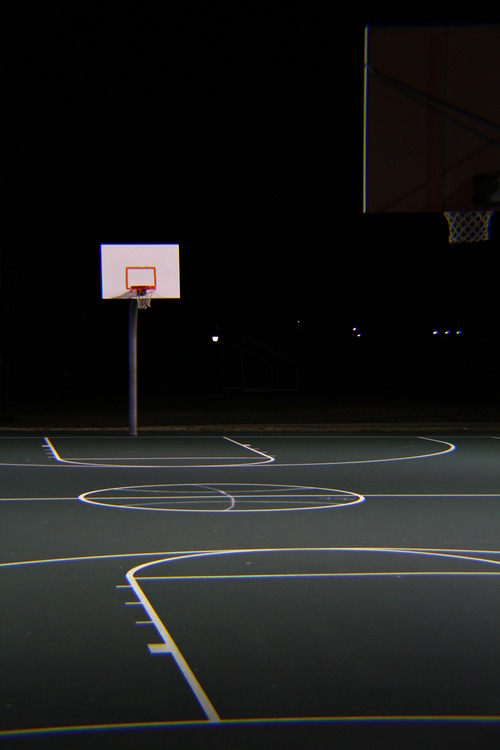 Typically, basketball courts in schools or gyms are made from 20 m long and 12 m wide.
Typically, basketball courts in schools or gyms are made from 20 m long and 12 m wide.
Central lines
The center line is parallel to the front and divides the field exactly in half. According to the standards - it should extend beyond the side lines by 15 cm on both sides.
In the middle of the center line there is a circle with a diameter of 3.6 m, which limits the central zone of the field. In this zone, the ball is played at the beginning of the game.
Three-Point Line
Three-Point Lines are located around the backboards on both sides of the field and consist of two straight lines 2.9 long9 m and a semicircle. Straight lines run perpendicular to the front at a distance of 0.9 m from the side lines. Despite the fact that visually the distance from the ring to the side of the three-point line seems to be less than to its central part, the distance from the backboard to any point is 6.75 m.
Penalty lines
Penalty lines limit the nearest area at the backboard.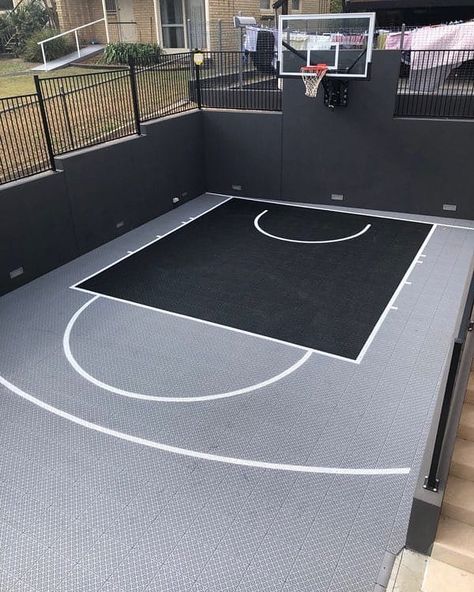 They consist of a trapezoid and a free throw zone.
They consist of a trapezoid and a free throw zone.
Despite the name, the "trapezium" is a rectangle (until 2009year it really was a trapezoid), which is located under the shield. Its dimensions are 5.8 meters long and 4.9 meters wide. The shield is located at a distance of 1.575 m from the end line in the middle of the site. In front of the backboard, at a distance of 1.25 m, there is a semicircle that limits the area for picking up the ball.
At a distance of 4.225 meters from the backboard, the trapeze zone ends and the free throw zone begins. It is a semicircle with a diameter of 3.6 m (like the central circle).
Paint zone lines
These lines are serifs on both sides of the trapezoid (parallel to the side lines). They limit the areas for players who are fighting for the ball during a free throw.
Zones on the basketball field
The basketball court is divided into zones using markings. Each zone has its own specific rules.
Center circle
The center circle is used as a separate kick-off area at the start of the game.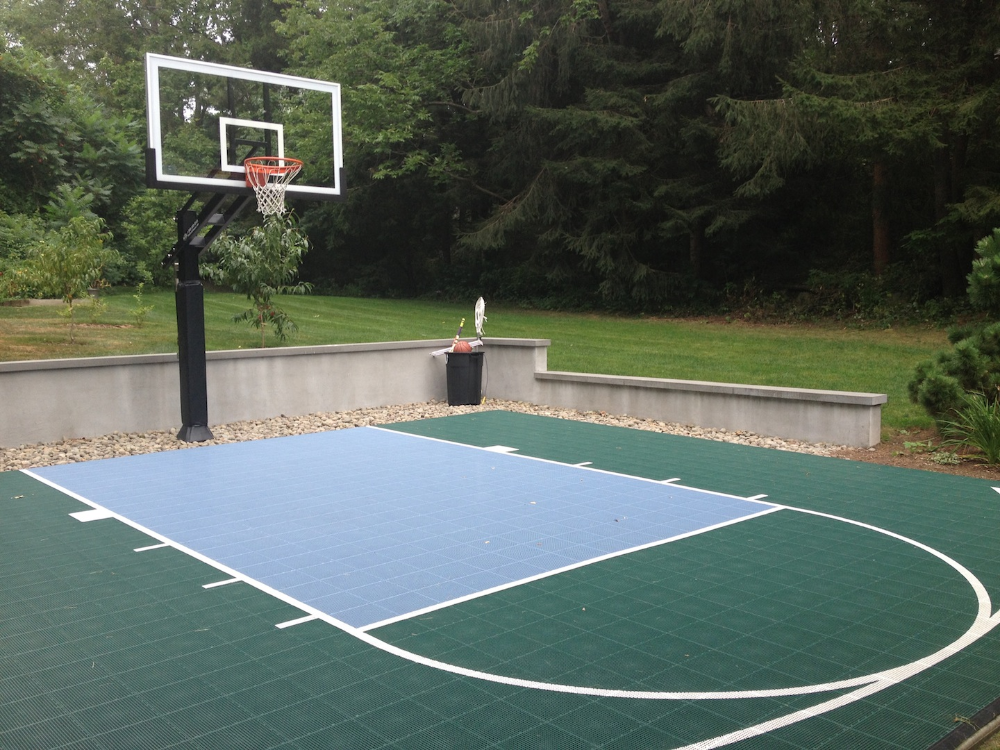 One representative from each team stand in a circle from their side and fight for the ball in a jump, after it is dropped by the referee. All players are exclusively on their side of the field, except for one who rebounds on the opponent's side.
One representative from each team stand in a circle from their side and fight for the ball in a jump, after it is dropped by the referee. All players are exclusively on their side of the field, except for one who rebounds on the opponent's side.
Neutral zone
The peculiarity of this zone is that as soon as the player of the attacking team with the ball crosses the center line and is on the side of the opponent, he cannot pass the ball to the player of his team who is on the other side of the field (i.e. behind center line on your side).
Three-point zone
The three-point line limits the near zone of the shot. Hitting the basket from outside the basket brings the team three points. If the throw was made inside the zone, then it brings two points.
Three-second zone
This is the zone in close proximity to the ring. It is called three-second, since the player of the attacking team cannot be in it for more than three seconds. Most balls are thrown in this zone, so when attacking, it provides maximum protection.
Free throw area
In controversial situations, a free throw is provided from this area. The player of the attacking team must score the ball without stepping over the line of the trapezoid. At the same time, the players of both teams are not in the three-second zone. They take up positions along the paint lines on the sides of the trapezoid and may not step outside the lines until the free throw shooter has shot the ball.
How to mark a basketball field?
Basketball field markings, whether it is an international competition court or an open-air amateur field, are best applied using special equipment. This will ensure the long life of the coating, the lines will not clog and will promote fair play.
You can order the marking of a basketball court in Moscow and the Moscow region from Rezkom. We will measure the premises and develop a design project for the field so that it complies with generally accepted rules and is convenient for operation. For more details, you can contact our manager by phone 8-495-64-24-111.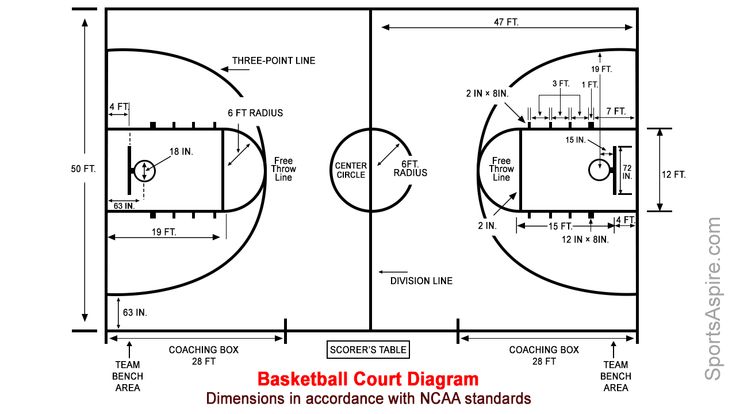
Basketball court dimensions in meters (FIBA and NBA standard)
Home / All sports / Basketball court dimensions in meters (FIBA and NBA standard)
12/24/2019 All sports Leave a comment 33,637 Views
Share with friends
The size of the basketball court depends on the level of the competition, the governing organization, and the age of the students. Often, for training sessions or fights in amateur tournaments, different sizes of the playing court are used, but also in basketball there are officially established standard sizes of the field.
FIBA and NBA Basketball Court Sizes
According to International Basketball Federation (FIBA) rules, the court must be rectangular and measure 28 by 15 meters (91.9 by 49.2 feet). However, in the overseas version of basketball, where the ruling organization of this sport is the National Basketball Association (NBA), the dimensions of the field for professional competitions are slightly different - 28. 7 and 15.24 meters (94 by 50 feet).
7 and 15.24 meters (94 by 50 feet).
As for amateur basketball, the size of the fields can be completely different:
- For schools and universities: 21-28 m long, 12-15 m wide
- Mini basketball (for children under 12) - 17×12 meters
Basketball court markings
All field lines must be 5cm wide in white. The playing area is limited by the side and front lines. The middle line divides the court in half into equal parts. In the center of the middle line there is a circle with a diameter of 3.6 m (r - 1.8 m), where a dropped ball is played before the start of each period.
How many periods in basketball: the difference between FIBA and NBA
There is an arc near each hoop at a distance of 6.75 m from the end line. Balls thrown into the basket outside it bring 3 points, everything inside the arc - 2 points.
Basketball's free throw zone is marked by a 3.6m line 5.8m from the endline and 4.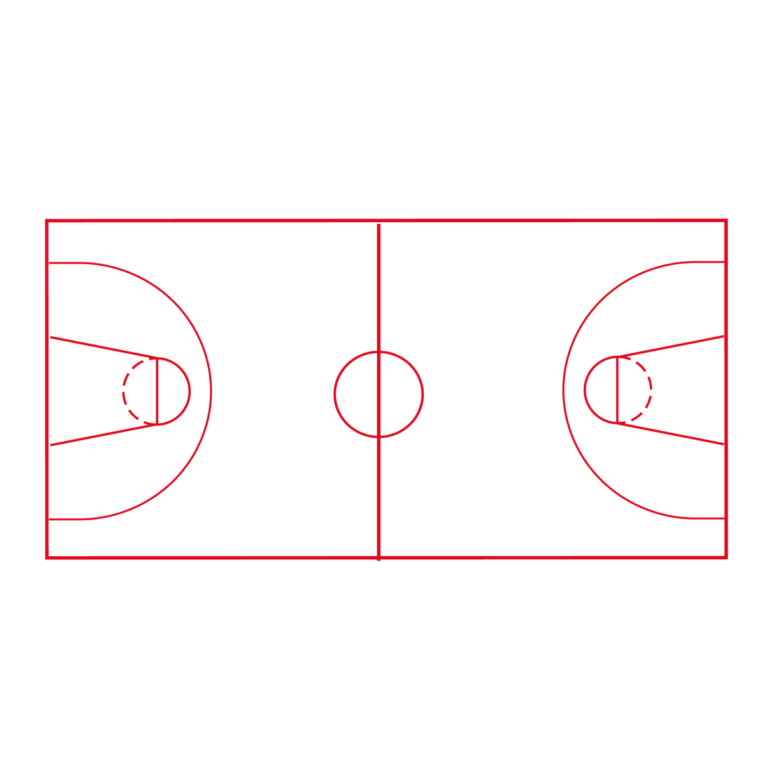 6m from the hoop.
6m from the hoop.
See picture of a basketball court with all lines and dimensions.
Differences in the rules for the size and layout of the court in the NBA and FIBA
| Playground | FIBA size | NBA size |
| Length (meters) | 28 | 28.65 |
| Width (meters) | 15 | 15.24 |
| Ring height (m) | 3.05 | 3.05 |
| Center circle diameter (m) | 3.60 | 3.60 |
| 3 points line (distance from the basket in meters) | 6.75 | 7.24 |
| Distance from the basket to the free-throw line (m) | 4.60 | 4.67 |
| Court line width (cm) | 5 | 5 |
The First Basketball Court Dimensions: A Brief History
The first basketball court was limited to the size of the college gym it was located in.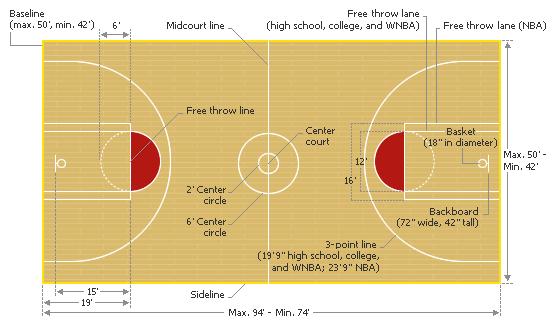 That hall measured 54 by 35 feet (16.45 × 10.66 meters).
That hall measured 54 by 35 feet (16.45 × 10.66 meters).
In 1891, James Naismith, a physical education teacher at Springsfield College in Massachusetts, invented a new game he later called basketball. At the first stages of the formation of a newly-fledged sport, peach baskets were used instead of rings, and in its first 13 rules, the creator did not indicate the size of the site. As basketball grew in popularity, it became necessary to standardize the size of the field. In 1924, the rules established the maximum size of the site - 28.65 by 15.24 m and the minimum - 18 by 9meters. The NBA still has such rules for the size of the court (28.65 by 15.24 meters), and FIBA eventually set its own standard - 28 × 15 meters.
Basketball rules concise and clear point by point
2019-12-24
Check also
Share with friendsThe rematch of Usyk vs Joshua will take place on August 20, 2022.